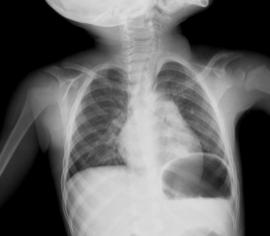Pediatric Radiology
In Pediatric Radiology is required maximum tact, understanding and the ability to find an approach to the child. In many of the studies are allowed the parents. However, children under 6 years old is very difficult to withstand the 20-30 minute study, where it is impossible change the position of the body. Therefore is produced sedation: kids get special medicine, fall asleep and dormant for are delivered to the study.
Computer methods is required the children to diagnose congenital malformations of the central nervous system and perinatal ischemic brain damage. Unfortunately, in children also encountered a brain tumor (craniopharyngioma, medulloblastoma, astrocytoma) that require immediate diagnosis and treatment.
For imaging departments which specialise in paediatric radiology, this is very easy as rooms can be tailored to suit a child's needs. For example bright wall designs, visual stimulation and toys. These can be permanent fixtures as the department wouldn't need to cater to any other age range. For departments which only see children occasionally, creating a 'child friendly' environment is more difficult.
Equipment used in Pediatric Radiology
Some equipment adapted for use in paediatric radiololgy includes:
- Artificial Windows / light panels;
- Positioning equipment such as sponges, weights.
Most equipment is the same used for adult imaging, but using lower dose and exposure setting adapted for children.
Although some diseases seen in paediatrics are the same as that in adults, there are many conditions which are seen only in infants. The specialty has to take in account the dynamics of a growing body, from pre-term infants to large adolescents, where the organs follow growth patterns and phases. These require specialised imaging and treatment which is carried out in a Children's hospital, which has all the facilities necessary to treat children and their specific pathologies.
Pediatric Pathology Requiring the Imaging
- Leukemia
- Osteosarcoma
- Greenstick fractures
- Infant respiratory distress syndrome
- Meningitis
- Wilms' tumour
- Teratoma
- Juvenile idiopathic arthritis
- Congenital abnormalities
hide
 In Pediatric Radiology uses medical imaging method for the diagnosis or treatment of diseases of children, to look at internal structures, and to see any abnormalities.
In Pediatric Radiology uses medical imaging method for the diagnosis or treatment of diseases of children, to look at internal structures, and to see any abnormalities. 






